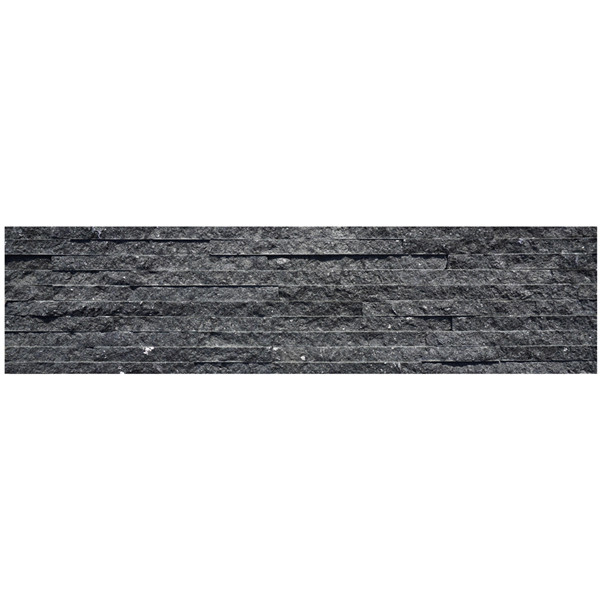Morocco, a country known for its rich history, vibrant culture, and stunning architecture, is also renowned for its exquisite craftsmanship in the production of cultured stone. Moroccan cultured stone, also known as Moroccan zellige or Moroccan mosaic, is a traditional art form that dates back centuries and continues to be a symbol of the country's unique heritage and artistic prowess.
In this comprehensive article, we will delve into the fascinating world of Moroccan cultured stone, exploring its history, production techniques, cultural significance, and the enduring appeal of this timeless craft.
History of Moroccan Cultured Stone
The origins of Moroccan cultured stone can be traced back to the 10th century when Islamic artisans introduced the art of mosaic tilework to Morocco. These skilled craftsmen combined geometric patterns, vibrant colors, and intricate designs to create stunning decorative elements for mosques, palaces, and other important buildings.
Over the centuries, Moroccan cultured stone evolved and diversified, incorporating influences from various cultures and regions, including Andalusia, the Middle East, and sub-Saharan Africa. The art form reached its peak during the Marinid dynasty (13th-15th centuries), when the city of Fez became a center of ceramic production and tilework.

Moroccan cultured stone continued to flourish during the subsequent dynasties, such as the Saadian and Alaouite dynasties, with each ruler leaving their mark on the art form through the construction of elaborate palaces, gardens, and religious buildings adorned with exquisite mosaic work.
ledge stone for sale of Moroccan Cultured Stone
The production of Moroccan cultured stone is a labor-intensive process that requires a high level of skill and precision. The craftsmanship involved in creating these decorative elements has been passed down through generations of artisans, preserving the traditional techniques and ensuring the quality and authenticity of the final product.
The primary materials used in the production of Moroccan cultured stone are clay, natural pigments, and glazes. The process begins with the preparation of the clay, which is shaped into small, square or rectangular tiles known as zellige. These tiles are then fired in a kiln to harden them and prepare them for the next stage of the process.
Once the tiles are fired, they are hand-cut into intricate geometric shapes, such as stars, squares, and triangles, using traditional tools such as chisels and hammers. The artisans then arrange the cut tiles into elaborate patterns and designs, creating a mosaic that is both visually stunning and structurally sound.
After the tiles are arranged, they are set in a bed of plaster or cement, a process known as "zillij." The gaps between the tiles are filled with a grout made from a mixture of lime and sand, which helps to secure the tiles in place and create a smooth, seamless surface.
Once the grout has dried, the surface of the mosaic is polished and cleaned to reveal the vibrant colors and intricate patterns of the cultured stone. The final step involves applying a protective sealant to enhance the durability and longevity of the mosaic, ensuring that it retains its beauty for years to come.
Cultural Significance of Moroccan Cultured Stone
Moroccan cultured stone holds a deep cultural significance in the country, serving as a symbol of tradition, craftsmanship, and artistic expression. The intricate geometric patterns and vibrant colors of Moroccan mosaic reflect the diverse cultural influences that have shaped the art form over the centuries, from Islamic art and architecture to Berber motifs and Andalusian designs.
In Moroccan architecture, cultured stone is used to adorn walls, floors, ceilings, and fountains, adding a touch of elegance and sophistication to both traditional and contemporary spaces. The use of mosaic tilework in Moroccan design is not only decorative but also symbolic, representing harmony, unity, and the interconnectedness of all things.
Moroccan cultured stone is also deeply rooted in Islamic art and culture, with many of the geometric patterns and motifs found in the mosaics having symbolic meanings related to spirituality and the natural world. For example, the eight-pointed star, known as the "Seal of Solomon," is a common motif in Moroccan mosaic and represents balance, harmony, and protection.
The enduring appeal of Moroccan cultured stone lies in its ability to transcend time and trends, remaining a timeless and treasured art form that continues to captivate and inspire people around the world.
Conclusion
Moroccan cultured stone is a testament to the skill, creativity, and cultural heritage of the artisans who have dedicated their lives to preserving this ancient craft. From its humble beginnings in the 10th century to its status as a symbol of Moroccan identity and artistic excellence, cultured stone continues to enchant and amaze with its beauty and intricacy.
As we have explored in this article, the history, production techniques, and cultural significance of Moroccan cultured stone all contribute to its enduring appeal and timeless charm. Whether adorning the walls of a historic palace or adding a touch of elegance to a modern home, Moroccan mosaic continues to inspire and delight with its unique blend of tradition and innovation.
In a world that is constantly evolving, Moroccan cultured stone stands as a reminder of the enduring power of art to transcend time and space, connecting us to our past, present, and future in a tapestry of beauty and creativity.
